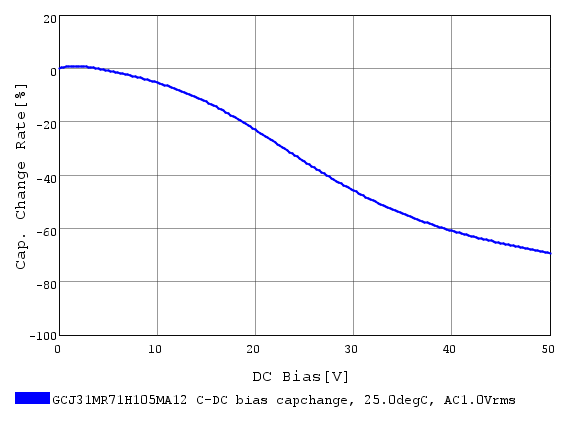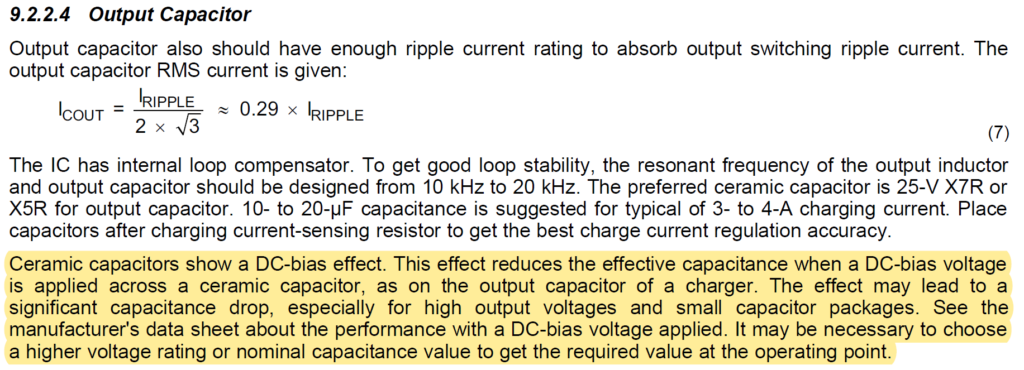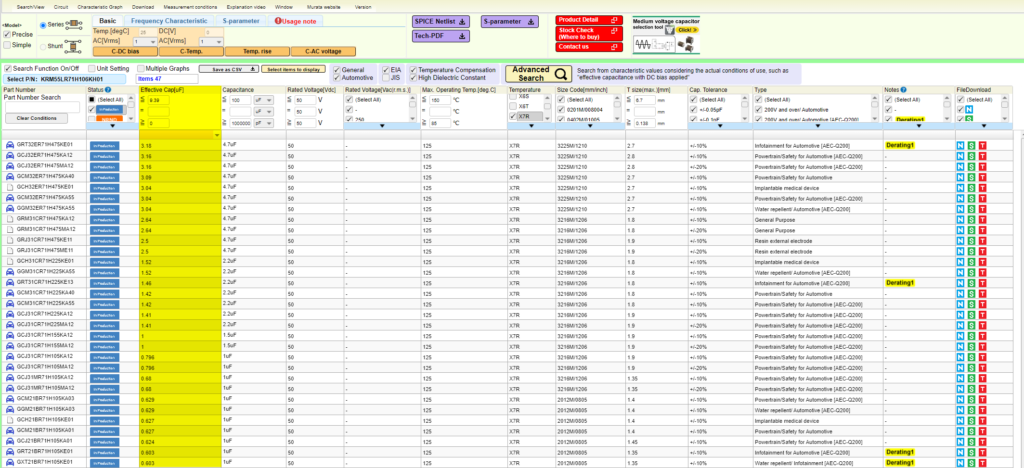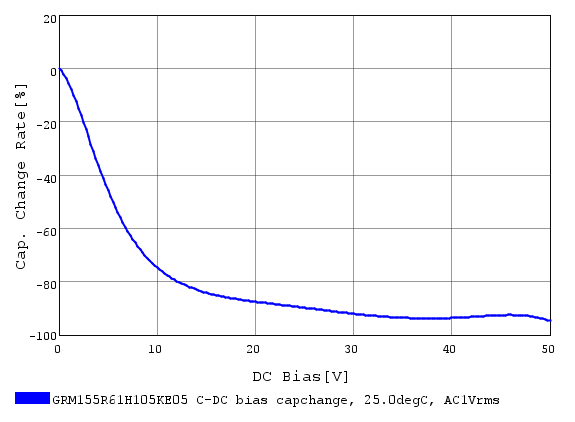This article, The DC Bias Effect in Ceramic Capacitors, is based on the above YouTube video. My aim with this is to provide the same content, but more detailed, in a written form. Please watch the video above for a different style of the same basic info.
Background
This topic is unique to all of the other articles and videos that I have made up to this point. The reason being, this affects virtually every single circuit that you will design. You would think that something this widespread would be common knowledge, right? Quite the contrary. This may also be the least known and talked about issue I have discussed.
My goal for this article and video is to give a quick overview of what the dc bias effect in ceramic capacitors is, how it impacts circuits, and what we can do about it. Using the tips and methods that I provide, you should be able to design all future circuits with this effect in mind.
What is the DC Bias Effect in Ceramic Capacitors?
Without going into the “nitty gritty” details inside a capacitor, the DC bias effect is quite simple. Whenever a DC voltage is applied across a class 2 capacitor, the effective capacitance decreases. The higher the voltage, the more the capacitance decreases. This decrease can be quite dramatic, with some capacitors showing more than an 80% decrease in capacitance while still being within the rated voltage of the capacitor.
The fact that the capacitance decreases so much when still within the rated voltage of the capacitor is crucial to understand. Many designers simply derate capacitors by a certain percent, say 50%, and think they are OK. As the graph in figure 1 shows, this is clearly not the case. Also, while switching to an X7R capacitor tends to help, it certainly doesn’t eliminate the DC bias effect.

Figure 2: A 1uF, 50V, X7R capacitor DC Bias vs Cap. Change %. Notice that at 24V the capacitance decrease is “only” ~30%. Source: Murata SimSurfing Web tool.
Class One vs Class Two Capacitors
There are two main classes of ceramic capacitors. The first is called class one, and their temperature characteristic starts with a C, H, or P. A common example is a C0G. Class two’s start with an X, Y, or Z. Common examples are X7R’s or X5R’s.
Due to the differences in their construction, the DC bias effect only affects Class two’s. This, among others, is the reason why for oscillators or tuned circuits, you should always use class one capacitors. But, since class one capacitors have much, much lower capacitance values, they are not nearly as commonly used.
For the rest of this article, I will only focus on class two capacitors.
How Does The DC Bias Effect in Ceramic Capacitors Affect Our Circuits?
So now that we know what the DC bias effect is, how does it impact our circuits? Luckily, for general purpose decoupling or filtering, it normally isn’t a big issue, since decoupling is a bit of “hand waving” with exact values. If the capacitor you spec at 1uF is actually 0.4uF, it usually won’t show up in testing. Also, since most decoupling is done at 5V or less, the DC bias effect diminishes further.
If you need to use a class two capacitor for an oscillator or tuned circuit due to cost, capacitance size or another reason, you must consider the DC bias. Instead of designing based on the nominal capacitance, you should instead use the effective capacitance based on the DC voltage that the capacitor will see.
A place where the DC bias effect in ceramic capacitors absolutely can affect your circuit is with buck or boost regulators. The entire loop for bucking the voltage down, or boosting it up, requires a certain amount of capacitance. If you base this off of the nominal capacitance value, it could cause stability or EMC issues. This especially is the case on the input of a buck, and the output of a boost, since the voltages here can be quite high.
The issue with buck/boost regulators is made much worse since many datasheet’s for these IC’s don’t state whether the required capacitance is nominal or effective. As shown in the above graphs, this distinction can lead to an 80% difference in the capacitance.

Figure 3: The datasheet for a TI BQ24707x buck battery charger is one of the few examples of a manufacturer explaining the DC bias and how it could impact the capacitance.
What Should We Do?
Since we now fully understand the DC bias effect in ceramic capacitors, what should we do about it? Sadly, there’s not one simple “rule of thumb” that you can follow. The fact that all class two capacitors suffer from this to some extent means that we have to learn to deal with it. There are a few basic things to keep in mind:
- Since the DC bias effect is directly related to the size of the dielectric, the smaller the capacitor footprint, the worse it performs.
- Increasing the rated voltage of the capacitor and using X7R’s instead of X5R’s can help to lessen the effect. It is important to realize that this does not eliminate it, however.
- For general decoupling/filtering, I’m a big fan of using the largest capacitance value for any given package size. This tends to help with the DC bias effect, and many other issues.
- Since many ceramic capacitor datasheets do not share their DC bias charts, learn to use the SimSurfing tool provided for free, by Murata.
Murata SimSurfing
SimSurfing is likely the single best manufacturer provided tool that exists. It has all the standard parametric searching features that you expect from a parts tool. It also allows the searching of the effective capacitance based on a specific DC voltage. You can also search while taking the temperature into account. Once you select a capacitor, you can generate pretty much any chart imaginable that is useful for a capacitor. Both figure’s one and two above were generated using this tool.

Figure 4: Using SimSurfing, it is easy to see how the DC bias effect in ceramic capacitors affects the effective capacitance at any given DC voltage.
The next best feature this tool has, is the exporting of simulation models. You can export a SPICE netlist and a S-Parameter file for each capacitor. This makes it easy to simulate circuits using real-world capacitors at given DC voltages and temperatures.
Conclusion
While ceramic capacitors are incredibly useful, they do have a big trap for designers if not paying attention. The DC bias effect of ceramic capacitors can dramatically reduce the effective capacitance at a given DC voltage. This can negatively affect many types of circuits, especially buck/boost regulators and any sort of tuned circuit. By using Murata’s SimSurfing tool, it is easy to determine what the actual capacitance of any capacitor will be at a given voltage.
MicroType Engineering specializes in difficult and unique electronics design and prototyping projects. To learn more about our process and how we can help you or your company’s next project, please reach out!



Recent Comments